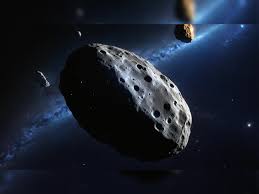San Diego: Meteorites obtained from Mars have helped scientists understand the internal structure of the red planet. Out of more than seventy-four thousand known meteorites, only 385 or so rocks came from Mars. Meteorites are rocks that fall to Earth when asteroids or planets collide with each other. It is not difficult for scientists to find out that these meteorites have come from Mars. Various landers and rovers have been exploring the surface of Mars for decades. Some early missions such as ‘Viking Landers’ had instruments to find out about the composition of the Martian atmosphere.

Scientists have claimed that you can see the reflection of the unique composition of the Martian atmosphere in some meteorites. Oxygen on Mars is also unique. Everything on Earth—including humans and the air we breathe—is made up of a specific composition of three isotopes of the element oxygen—oxygen-16, oxygen-17 and oxygen-18. But Mars has a completely different composition, which is like a geochemical fingerprint because it is Martian.
Meteorites tell the story of Mars
Martian meteorites found on Earth give geologists like me clues to the Red Planet’s composition and history of volcanic activity. They give us a chance to study Mars without sending a spacecraft 140 million miles away. These Martian meteorites were formed from red-hot lava that once existed deep inside the planet. When these volcanic rocks cooled and solidified, radioactive elements inside them began to decay, acting as a radiometric clock. This tells scientists when they were formed.
Through them, we know that some Martian meteorites are less than 175 million years old, which is very young in geological terms. In contrast, some Martian meteorites are older and formed close to the time the planet formed. These Martian meteorites tell the story of a planet that has been volcanically active throughout its history. In fact, volcanoes are likely to erupt on Mars even today. However, scientists have never recorded such an eruption.
How was Mars formed?

The rocks themselves also preserve chemical information that suggests some of the key events on Mars occurred early in its history. Mars formed rapidly about 4.5 billion years ago from the gas and dust that formed the early solar system. Then, soon after its formation, its interior split into a metallic core and a solid rocky mantle. Since then, there have been very few changes to the interior of Mars.
It is of great interest to me to understand how Mars achieved such drastic changes at such a young age, even though the planet is still volcanically active today. I want to know what the inside of Mars looks like and how its internal structure can explain features such as volcanoes on the surface of the Red Planet. When geologists search for answers to questions about volcanic activity on Earth, we usually examine lava samples from the same volcano at different locations or times. These samples allow us to understand the local processes associated with each volcano in relation to larger-scale planetary activities.




